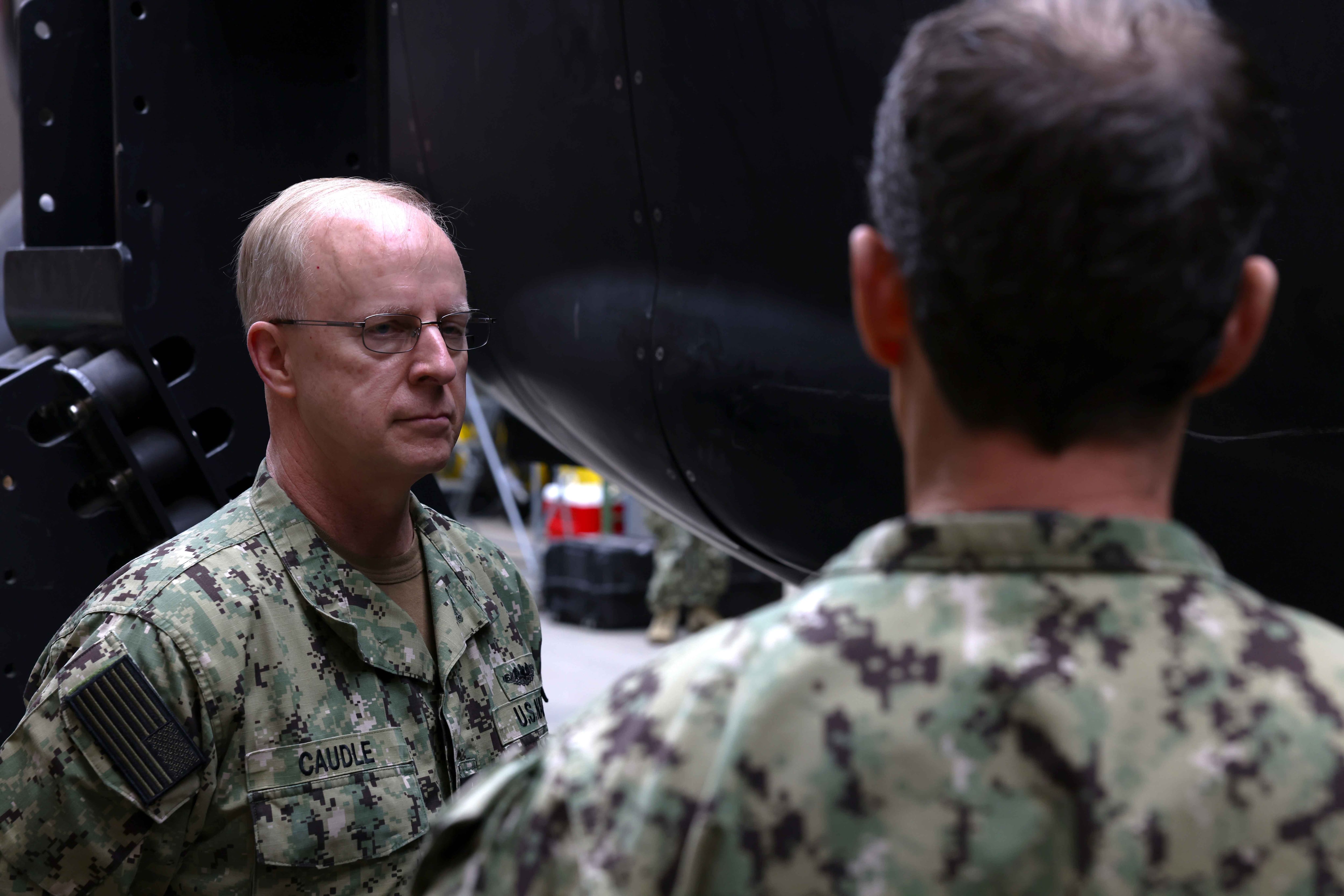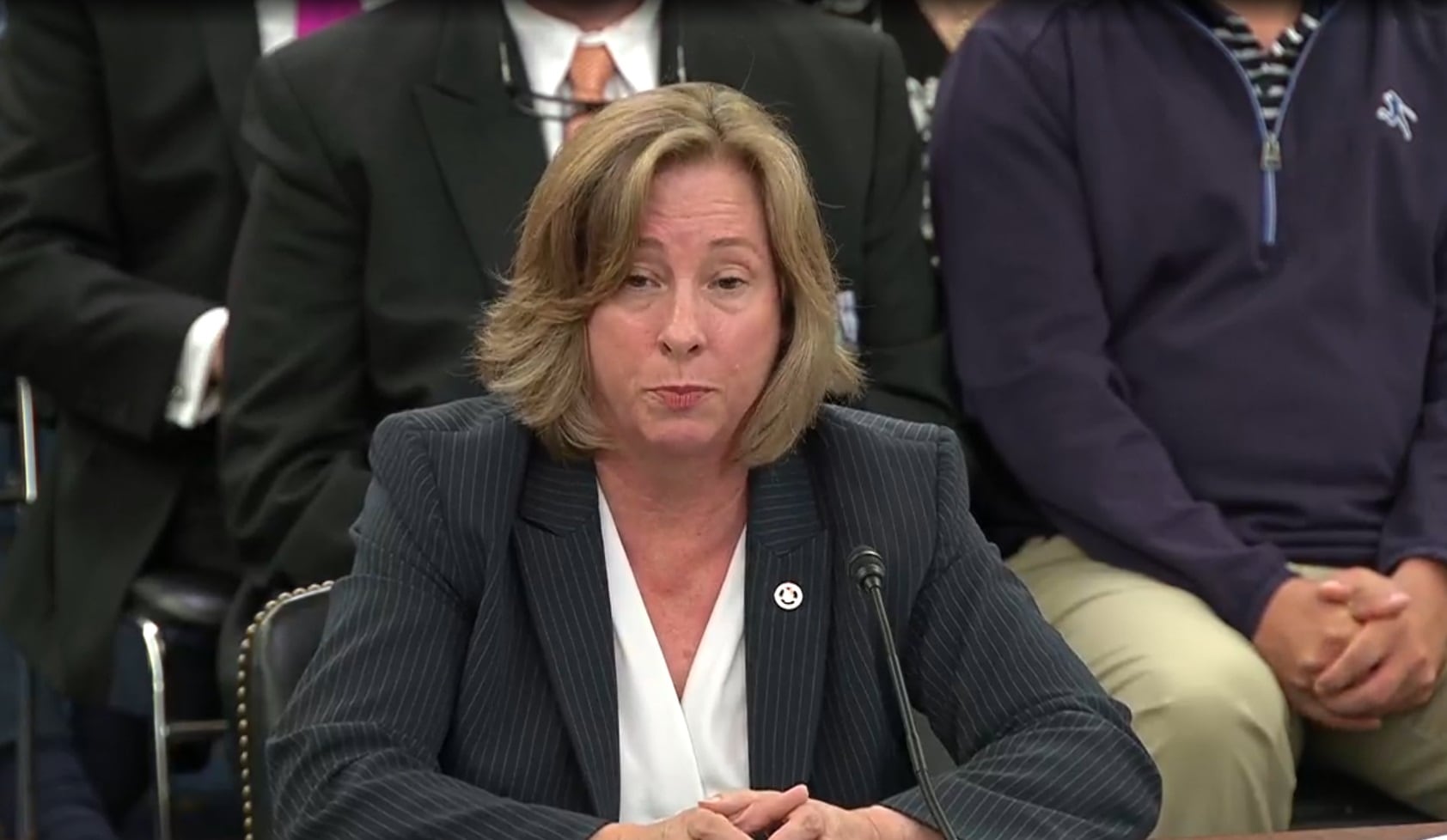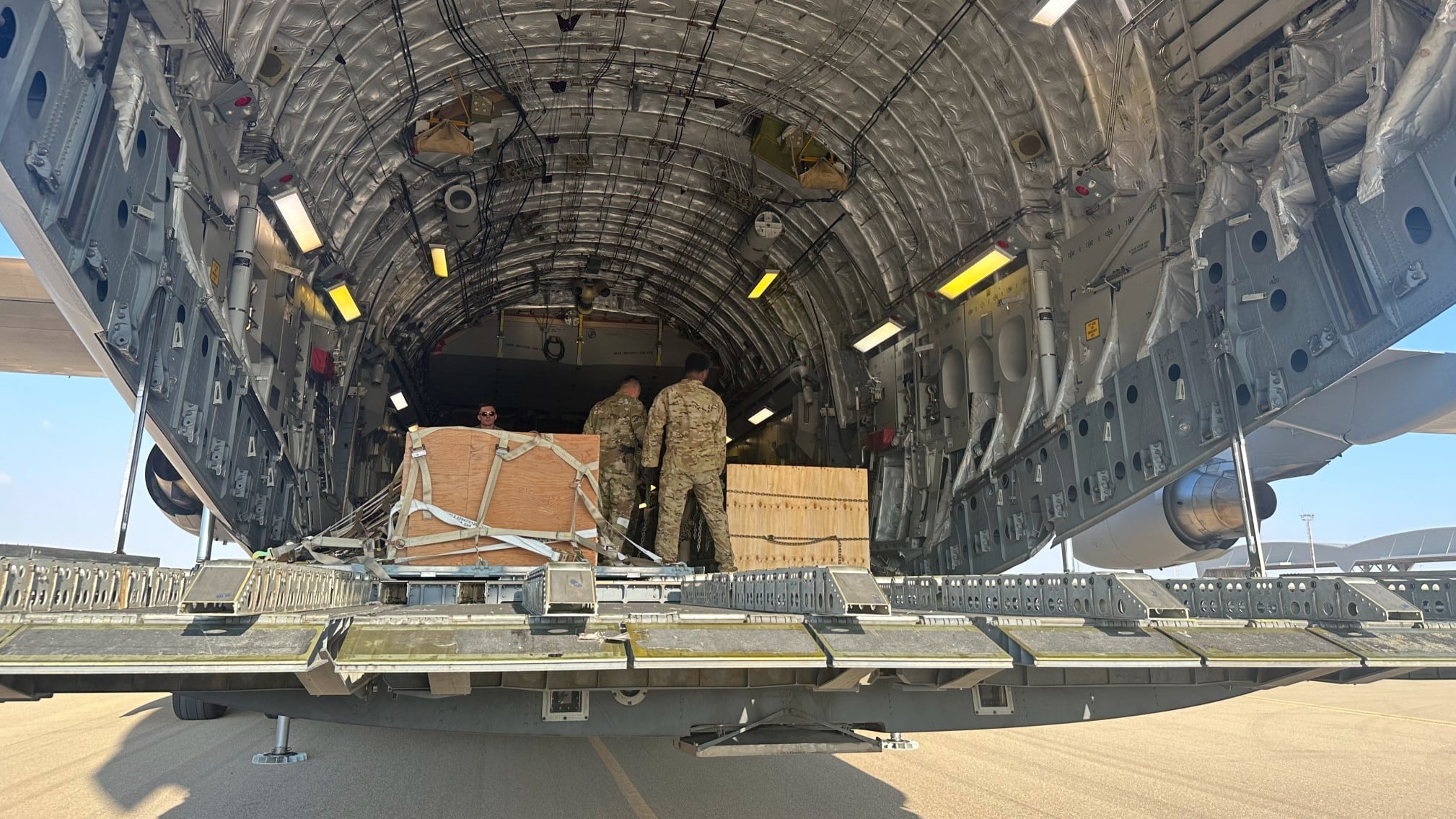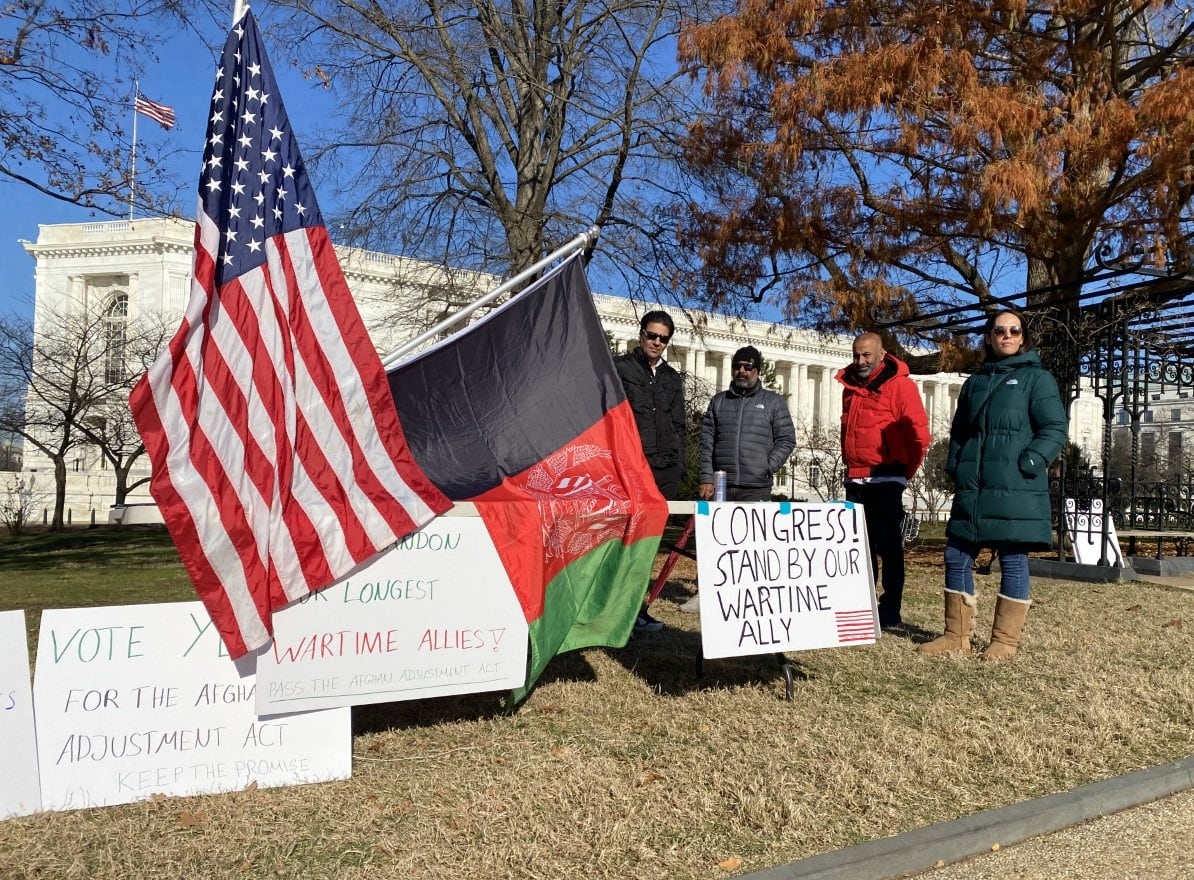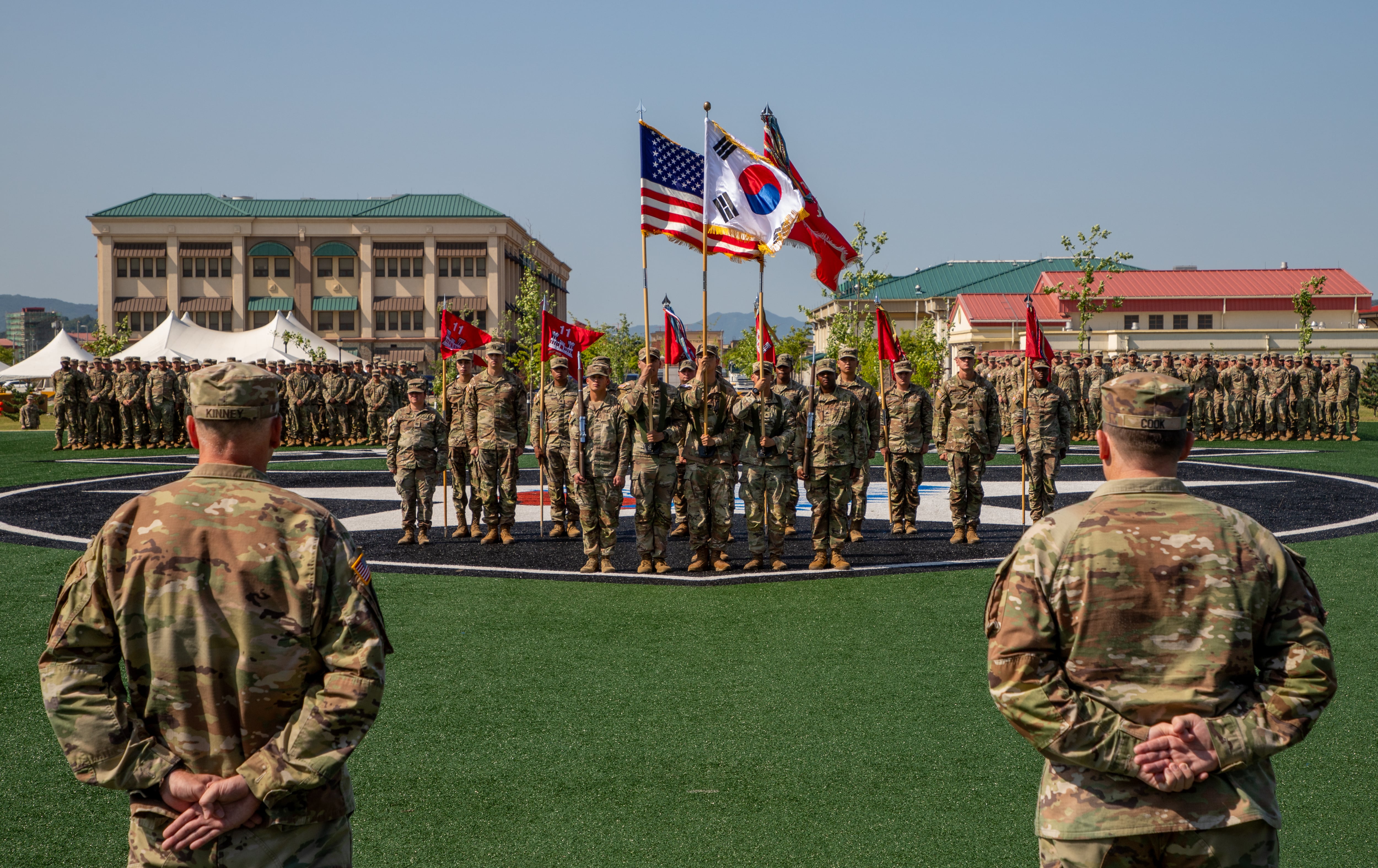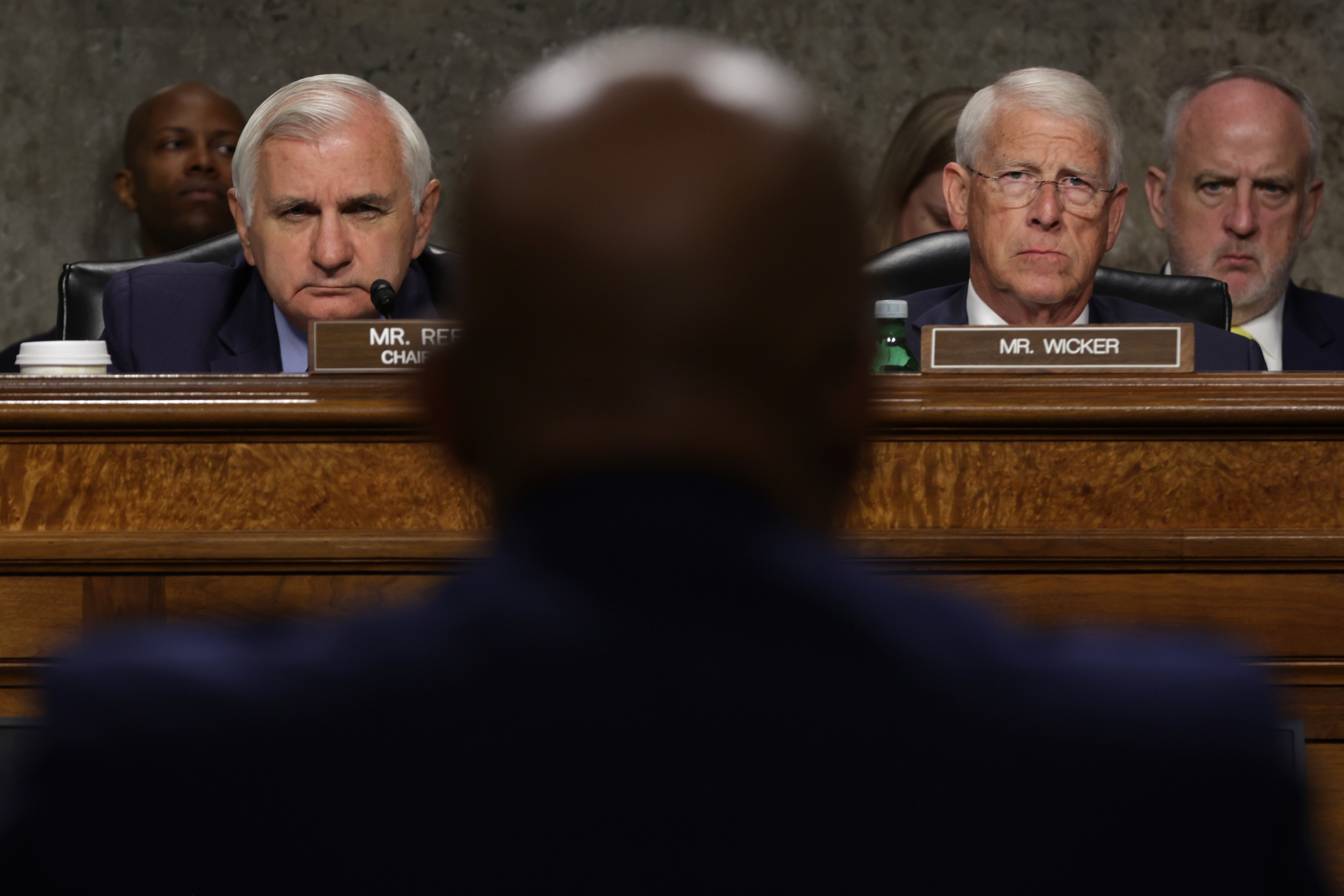Images of combat equipped Marines rapidly descending down cargo nets in preparation for a beach landing hearkens back to World War II — but Marines operating in the Pacific recently just practiced a proof of concept version of the old school debarkation tactic.
From March 21 to March 28, the 31st Marine Expeditionary Unit and the amphibious assault ship America conducted a large-scale Guam to Okinawa, Japan, maneuver exercise. It rehearsed elements of the Corps’ future plans to fight in the Pacific from sinking vessels at sea, beach landings and long-range rocket precision artillery strikes.
But included in that training was a rehash of using cargo nets to prep for an uncontested insert onto small islands across the Pacific. Marines with 1st Battalion, 5th Marines aboard the America practiced scaling down the cargo nets at Apra Harbor, Naval Base Guam, according to a news release from the 31st MEU.
RELATED
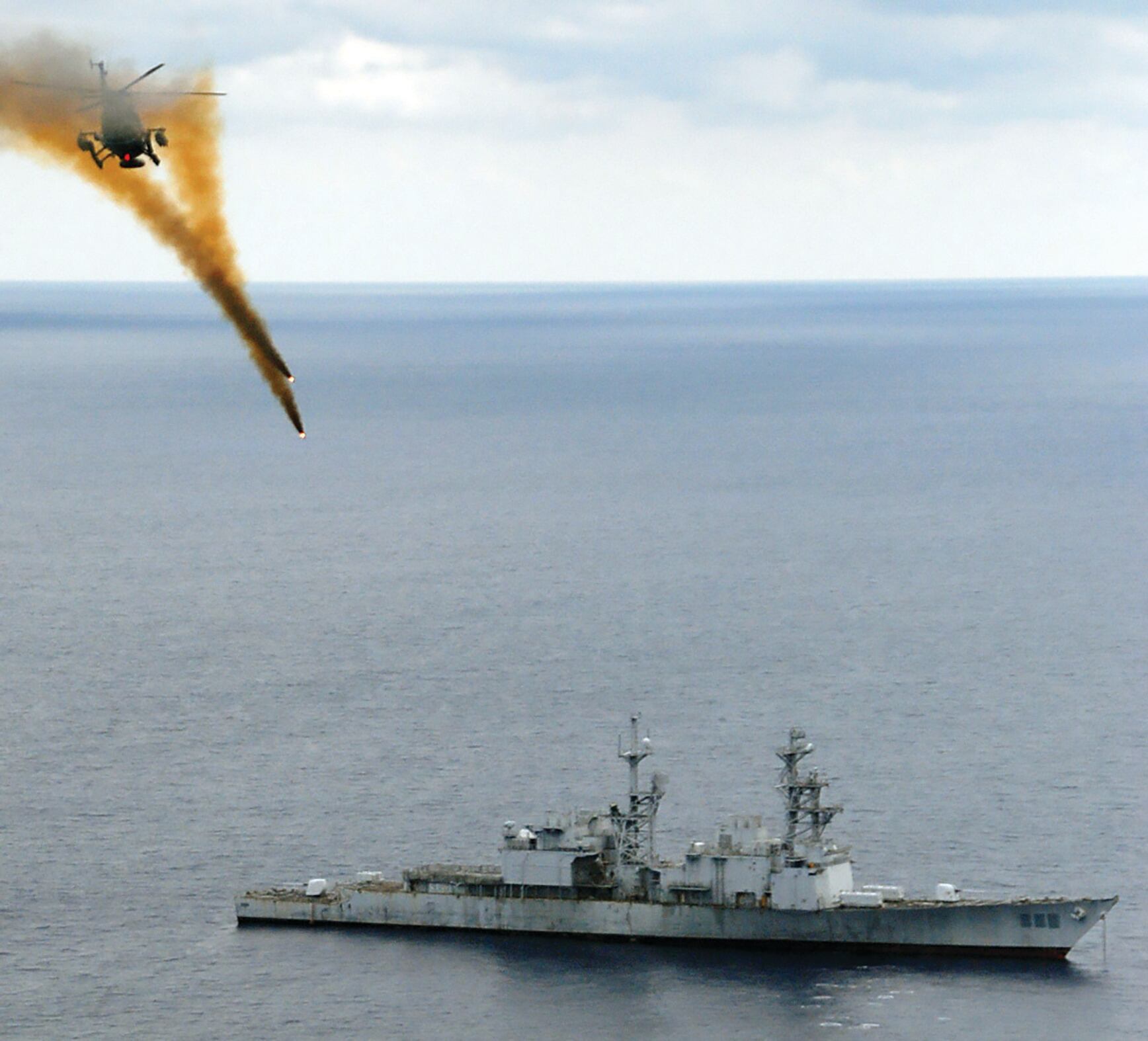
“This capability greatly enhances the 31st MEU’s ability to conduct increasingly dynamic tactical actions and operations across the Pacific,” Master Sgt. Daniel Scull, the safety officer-in-charge for the event, said in a release.
“Under the cover of darkness, specially-equipped Marine elements can debark onto a landing craft and insert uncontested onto small islands in the Pacific," he said.
The Guam to Okinawa maneuver exercise also featured the first ship-to-shore HIMARS rocket artillery deployment and integration within a MEU, according to Rear Adm. Fred Kacher, the commander of the America Expeditionary Strike Group.
On March 27 while approaching Okinawa, Marines with 1/5 offloaded from Assault Amphibious Vehicles, while Landing Craft Air Cushion hovercraft brought HIMARS system along with light armored reconnaissance and Joint Light Tactical Vehicles, according to a release.
The HIMARS system simulated rocket shots with “notional” fire missions from target data sets provided by an F-35B sensor-to-shooter hand off.
“This exercise allowed us to demonstrate how we would use HIMARS in support of MEU maneuver elements. Being able to strike with long-range precision fires gives the MEU commander another lethal capability at his disposal when looking to respond to crisis in the region,” Maj. Brock Lennon, the 31st MEU fires officer said in a release.
F-35B stealth fighters and AH-1Z attack helicopters conducted live fire events using AIM-9M missiles, GAU-22 25 mm cannons and GBU-49 maritime strike bombs, the release detailed.
According Maj. Casey Jenkins, the F-35B detachment officer-in-charge, the guided bombs hit a simulated maritime target for the first time ever for a MEU operating in the Indo-Pacific.
“The GBU-49 adds a weapon to our arsenal that allows us to target fast-moving vessels on both the water and land,”Jenkins said in the release. “The capabilities of this weapon have many practical applications and are a welcome addition to the F-35B’s weapons loadout.”
Commandant of the Marine Corps Gen. David Berger has oft said the Corps needs to be able to support the Navy by sinking ships at sea — something Marines have little experience with.
The Corps is in search of missiles and a platform that can aid the Marines in dropping ships to the bottom of the sea. The Marines have looked at pairing the JLTV with the Naval Strike Missile.
“This capstone exercise focused on full mission profiles from the air, land and sea - rehearsing and demonstrating lethal power projection both in blue water and littoral operations,” Col. Robert Brodie, commander of the 31st MEU, said in the release.
“The Marines and Sailors of our joint team came together to solve a comprehensive series of simulated problem sets and successfully completed a wide variety of combat-focused tactical missions," he explained in the release.
Shawn Snow is the senior reporter for Marine Corps Times and a Marine Corps veteran.

